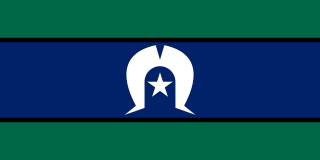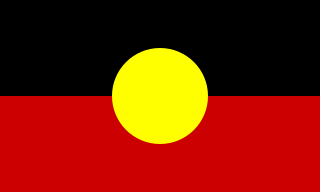Background
Aboriginal and Torres Strait Islander peoples observe the position of the stars in the sky and follow water, plant and animal cycles as ways of identifying seasonal phenomena. The seasonal calendars of different Aboriginal and Torres Strait Islander cultural groups demonstrate an understanding of the interdependence and interrelationships amongst living things. They use their calendars to predict seasonal changes and weather patterns to determine the availability of particular resources or the timing of journeys. [1]
The seasonal calendars vary according to geographic location, ecological context and cultural interpretation. Specific biotic events, often referred to as bio-indicators, can occur locally or over great distances, enabling accurate predictions of seasonal changes. For instance, the appearance of particular insect species may be an indication that the wet season is approaching, indicating that it is time to harvest yams. Observations of cyclical animal behavioural patterns are also important, for example when the D'harawal people of the Sydney basin area hear the mating cries of tiger quolls, the lillipilli fruit has started to ripen. Once the fruit starts falling, it is a sign for the people of this country to begin their annual journey to the coast, to seek out other seasonal resources. [1]
Seasonal calendars continue to be used by many groups today. The publication of First Nations' calendars has revealed the immense scientific knowledge held by the respective communities and has informed Western scientific understandings across a wide range of disciplines, for example, botany, zoology, ecology, meteorology and many more. [1]
Torres Strait Islands seasons
In the Torres Strait Islands, the seasons are associated with the way the wind blows and changes in the environment. The four seasons based on the wind are known as Kuki, Zey (Zei in Masig) and Nay Gay (Nai Gai in Masig) and Sager (Zoerr): [9] [10]
- During Kuki, from January until April, the strong north-west winds (strong winds) and bring the wet season (monsoon).
- From May to December it is Sager/Zoerr, when the south-east trade winds blow, and the weather is dry.
- Southerly winds blow at different and unpredictable times during the year, and these times are known as Zey/Zei.
- During Nay Gay/Naigai, from October through to December, northerly winds predominate, bringing high heat and humidity.
The people of Masig (otherwise known as Yorke Island), known as the Masigalgal, are part of the Kulkulgal nation of the central Torres Strait. The timing and duration of these four seasons varies from year to year, and Masig islanders observe signs in the winds, weather, sea life, plants and animals that tell them when one season is expected to change to another. Community celebrations, hunting, gardening and cultural activities are based around this annual cycle of resource availability and renewal. [10]

The Noongar are Aboriginal Australian people who live in the south-west corner of Western Australia, from Geraldton on the west coast to Esperance on the south coast. There are 14 different groups in the Noongar cultural bloc: Amangu, Ballardong, Yued, Kaneang, Koreng, Mineng, Njakinjaki, Njunga, Pibelmen, Pindjarup, Wadandi, Whadjuk, Wiilman and Wudjari. The Noongar people refer to their land as Noongar boodja.

The Torres Strait Islands are an archipelago of at least 274 small islands in the Torres Strait, a waterway separating far northern continental Australia's Cape York Peninsula and the island of New Guinea. They span an area of 48,000 km2 (19,000 sq mi), but their total land area is 566 km2 (219 sq mi).

Torres Strait Islanders are the Indigenous Melanesian people of the Torres Strait Islands, which are part of the state of Queensland, Australia. Ethnically distinct from the Aboriginal peoples of the rest of Australia, they are often grouped with them as Indigenous Australians. Today, there are many more Torres Strait Islander people living in mainland Australia than on the Islands.
Murri is a demonym for Aboriginal Australians of modern-day Queensland and north-western New South Wales. For some people and organisations, the use of Indigenous language regional terms is an expression of pride in their heritage. The term includes many ethno-linguistic groups within the area, such as the Kamilaroi (Gamilaraay) and Yuggera (Jagera) peoples.

Southwest Australia is a biogeographic region in Western Australia. It includes the Mediterranean-climate area of southwestern Australia, which is home to a diverse and distinctive flora and fauna.
The Gove Peninsula is at the northeastern corner of Arnhem Land in the Northern Territory of Australia. The peninsula became strategically important during World War II when a Royal Australian Air Force base was constructed at what is now Gove Airport. The peninsula was involved in a famous court case known as the Gove land rights case, when local Yolngu people tried to claim native title over their traditional lands in 1971, after the Australian Government had granted a mineral lease to a bauxite mining company without consulting the local peoples. Today the land is owned by the Yolngu people.

Aboriginal Australians are the various Indigenous peoples of the Australian mainland and many of its islands, excluding the ethnically distinct people of the Torres Strait Islands.
Kenneth Desmond Colbung AM MBE, also known by his indigenous name Nundjan Djiridjarkan, was an Aboriginal Australian leader from the Noongar people who became prominent in the 1960s. He was appointed an MBE and an AM for his service to the Aboriginal community.

Whadjuk, alternatively Witjari, are Noongar people of the Western Australian region of the Perth bioregion of the Swan Coastal Plain.

Bamaga is an Indigneous town and locality about 40 kilometres (25 mi) from the northern tip of Cape York in the north of Queensland, Australia. It is within the Northern Peninsula Area Region. It is one of the northernmost settlements in continental Australia and is the administrative centre for the Northern Peninsula Area Regional Council.

Mapoon is a coastal town in the Aboriginal Shire of Mapoon and a locality split between the Aboriginal Shire of Mapoon and the Shire of Cook in Queensland, Australia. In the 2021 census, the locality of Mapoon had a population of 469 people.

The Ngarinyin language, also known as Ungarinjin and Eastern Worrorran, is an endangered Australian Aboriginal language of the Kimberley region of Western Australia spoken by the Ngarinyin people.
Noongar is an Australian Aboriginal language or dialect continuum, spoken by some members of the Noongar community and others. It is taught actively in Australia, including at schools, universities and through public broadcasting. The country of the Noongar people is the southwest corner of Western Australia. Within that region, many Noongar words have been adopted into English, particularly names of plants and animals.
Indigenous Australian customary law refers to the legal systems and practices uniquely belonging to Indigenous Australians of Australia, that is, Aboriginal and Torres Strait Islander people.
The Torres Strait Island Region is a local government area in Far North Queensland, Australia, covering part of the Torres Strait Islands. It was created in March 2008 out of 15 autonomous Island Councils during a period of statewide local government reform. It has offices in each of its 15 communities, and satellite services in Thursday Island and in Cairns.
In Australia, Indigenous land rights or Aboriginal land rights are the rights and interests in land of Aboriginal Australians and Torres Strait Islander people; the term may also include the struggle for those rights. Connection to the land and waters is vital in Australian Aboriginal culture and to that of Torres Strait Islander people, and there has been a long battle to gain legal and moral recognition of ownership of the lands and waters occupied by the many peoples prior to colonisation of Australia starting in 1788, and the annexation of the Torres Strait Islands by the colony of Queensland in the 1870s.
Alyangula is the largest township on Groote Eylandt in the Northern Territory.
Perth, the capital city of the state of Western Australia, has a Mediterranean climate, with hot, dry summers and mild, wet winters. February is the hottest month of the year, with an average high of 31.6 °C (88.9 °F), and July is the coldest month of the year, with an average low of 7.9 °C (46.2 °F). 77% of rain in Perth falls between May and September. Perth has an average of 8.8 hours of sunshine per day, which equates to around 3,200 hours of annual sunshine, and 138.7 clear days annually, making it the sunniest capital city in Australia.
The South West Aboriginal Land and Sea Council (SWALSC) is the organisation that represents the Noongar people, the Aboriginal Australians of the southwest corner of Western Australia. It was formed in 2001, and is incorporated under the Corporations Act 2006. The Council's primary role is to assist the Noongar people with native title claims and Indigenous land use agreements. It also helps support Noongar culture and heritage, and publishes the Kaartdijin Noongar website.

Masig Island is an island and locality in the Torres Strait Island Region, Queensland, Australia. In the 2021 census, Masig Island had a population of 283 people.
 Text was copied from this source, which is available under an Attribution 4.0 International (CC BY 4.0) licence, as per this note.
Text was copied from this source, which is available under an Attribution 4.0 International (CC BY 4.0) licence, as per this note. Text was copied from this source, which is available under a Attribution 3.0 Australia (CC BY 3.0 AU) licence, as in this note.
Text was copied from this source, which is available under a Attribution 3.0 Australia (CC BY 3.0 AU) licence, as in this note.






